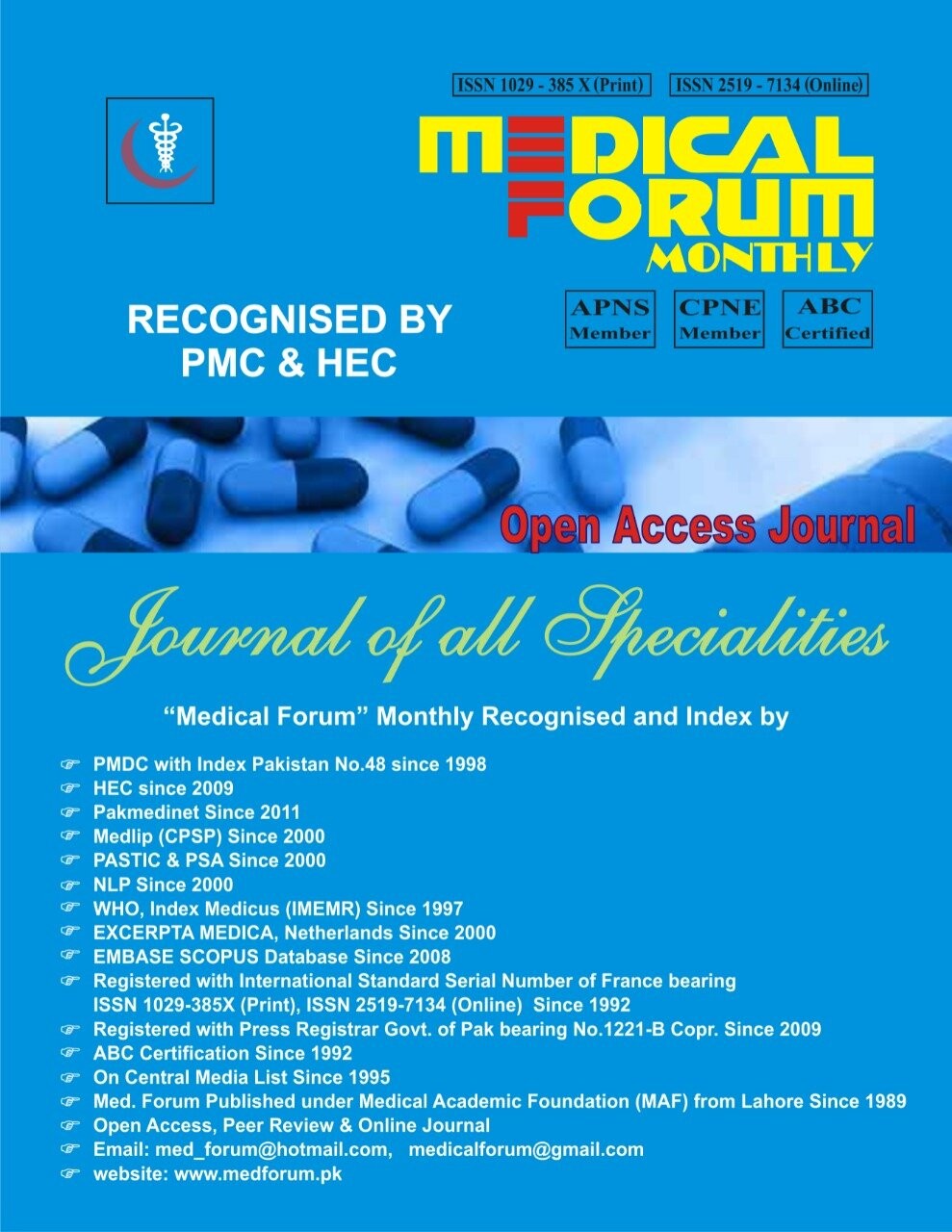
36.Comparison between Outcomes of Conventional Dynamic Hip Screws and Proximal Femoral Nail (PFN) Fixation of Intertrochanteric Fracture of the Femur
Muhammad Kamran Shafi1, Ghulam Qadir Khan2, Yousaf Bin Tahir2, Muhammad Ishfaq2, Azhar Rasheed2 and Asadullah Mehmood3
ABSTRACT
Objective: To compare the outcomes of conventional dynamic hip screws and proximal femoral nail fixation of intertrochanteric fracture of the femur.
Study Design: Randomized control trial study
Place and Duration of Study: This study was conducted at the Department of Orthopaedic Surgery, Nishtar Medical University Multan from 1st June 2020 to 31st October 2021.
Materials and Methods: Eighty four patients with unstable intertrochanteric fractures were enrolled. All patients between the ages of 25 and 75, of either gender, were enrolled. All patients with renal disease, pathological fractures, or open fractures were barred from participating. Patients were categorized into two groups. Group-I was allocated for dynamic hip screws and Group-II was given proximal femoral nail. Standard x-rays were taken for measuring initial collapse on zero post-operative day. After 4 weeks partial weight was allowed for patients whereas secondary collapse was measured after 6 weeks.
Results: The patient's mean age in Group-I and Group-II was 43.6±9.54 years, and 50.734±10.31 years respectively. The prevalence of stable, unstable, and reverse oblique fractures was 33%, 55%, and 13% respectively. About 100 and 250 mL average blood loss was observed in PFN and DHS respectively. In PFN, patients were more exposed to intra-operative radiation compared to DHS. The average operating time for PFN and DHS was 40minutes and 65 minutes respectively. Patients who received PFN began ambulation earlier because they had a higher Harris Hip Score in the beginning (at 4 and 12 weeks). In the long run, the functional outcomes of both implants were nearly identical.
Conclusion: The better outcomes were observed in the PFN group. Also, the unstable pattern was common in higher grade osteoporosis among elder patients. When compared to the DHS group, the PFN group has less blood loss and less operating time. Patients in the PFN group began ambulation earlier than those in the DHS group.
Key Words: Dynamic hip screw (DHS); Intertrochanteric fracture; Proximal femoral nail (PFN)
Citation of article: Shafi MK, Khan GQ, Tahir YB, Ishfaq M, Rasheed A, Mehmood A. Comparison between Outcomes of Conventional Dynamic Hip Screws and Proximal Femoral Nail (PFN) Fixation of Intertrochanteric Fracture of the Femur. Med Forum 2022;33(2):158-161.
